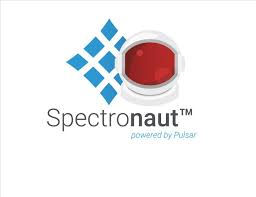Benefits of timsTOF HT
It identifies in total 4700 protein groups spanning more than five orders of magnitude in relative abundance.
Data analysis using TIMS DIA-NN on the PaSER platform shows protein intensity distributions similar to the expected values from sample mixing, highlighting very accurate quantification across the abundance range.

Plasma proteomics

Rapid tissue proteomics
Applications
Features

High speed
PASEF® technology on the timsTOF HT achieves 150 Hz sequencing speed without affecting resolution or sensitivity.

Robustness
The unique instrument design enables robust performance and routine operation over thousands of samples without requiring cleaning.

Sensitivity
High charge capacity of the 4th generation TIMS-XR for increased analytical depth.

Selectivity
Adding ion mobility separation to the advanced quadrupole and Time-of-Flight capacities.

Please submit the below form and our team will connect with you!
Your content has been submitted

Workflow of the System
timsTOF HT - Expanding the capabilities of high-throughput, 4D-Proteomics™
Related Videos
The new timsTOF HT mass spectrometer is equiped with the 4th generation high capacity TIMS-XR analyzer and advanced digitizer technology (ADT). It offers higher dynamic range for unmatched analytical depth and quantitation in high throughput proteomics experiments. The timsTOF HT is fully CCS-enabled and supports all PASEF® acquisition modes including PASEF®, dia-PASEF® and prm-PASEF® achieving flexibility in 4D-Proteomics™. Simply uncompromised proteomic depth at scale. The 4th generation dual TIMS-XRTIMS achieves a near 100% duty cycle by accumulating ions in TIMS funnel 1, while ions in TIMS tunnel 2 are released sequentially (> 150 Hz). This process of parallel accumulation serial fragmentation (PASEF®) enables high speed collisional cross section (CCS) analysis.

The highly unique TIMS design enables unmatched duty cycle (up to 100%), significant improvement in IMS resolution (R>200), unprecedented collisional cross section (CCS) reproducibility and high sensitivity.
timsTOF combines high ion mobility resolution with ultra-high resolution QTOF technology for optimal performance. imeXTM technology further boosts the functionality by making ion mobility resolution an adjustable parameter.
Investigating samples in imeX survey mode can lead to mobility-resolved full scans, and then extending workflow with a detailed examination of selected compounds and precise collisional cross sections (CCS). Increased ion mobility resolution up to 200 for unique insights into samples can be acheived in imeX ultra mode.


Data-independent acquisition dia-PASEF is both more sensitive and selective than traditional DIA approaches as it applies the PASEF principle to combine the advantages of DIA with the inherent ion efficiency of PASEF. Over the entire liquid chromatography-mass spectrometry (LC-TIMS-MS)/MS dia-PASEF run, a perfect data cuboid is created containing m/z, ion mobility (CCS), retention time and intensity. TIMS separation increases selectivity, excludes singly charged precursors from fragmentation and cleans up the sample by concentrating signals from noise. Making use of the correlation of molecular weight and CCS coded information from the dual-TIMS funnel, dia-PASEF enables highly confident identification.

The timsTOF fleX combines 4D-Omics with MALDI Imaging technology, including smartbeam 3D laser optics to be a fast measurement all in one platform.
It is a dual source instrument ideal for SpatialOMx®. It conducts robust ESI measurements and spatially resolves a wide range of molecules directly from tissue using one platform.
During operation, software activation of the smartbeam 3D laser is the only change in the source region to change from ESI to MALDI in seconds.

timsTOF Flex MALDI 2 provides post ionization technique which reduces ion suppression effects and improves sensitivity by orders of magnitude. After the initial MALDI process, a second laser, sitting parallel to the sample surface, fires into the evolving plume and post-ionizes neutral (mainly matrix) molecules. A charge transfer from post-ionized matrix molecules to neutral analyte molecules leads to an amazing sensitivity gain for many analytes.
MALDI-2 post-ionization compensates the lower sample amount per pixel, making even the finest molecular distributions visible. Combining MALDI-2 post-ionization with microGRID enabled high spatial resolution opens the field for the analysis of the smallest unit of eukaryotic life - single cells.

TimsTOF MALDI Pharmapulse (MPP) uses a dual MALDI / ESI ion source with industry-leading 10 kHz smartbeam™ 3D laser which enable uHTS compatible speed and throughput. It supports rapid gas-phase separation of isobars, and even isomers, by exploiting the molecular collisional cross-section. This, in combination with routine 50,000 mass resolution in QTOF-MS detection facilitates revolutionary levels of assay specificity. It features the extreme speed and proven robustness of MALDI in the essence of tims technology.
It has an automation interface which supports HTS application of drug discovery. It has MPP 2023 which enables seamless transfer of data and results to downstream analysis software.

Faster separation of isobars and isomers
It is capable of separating isobars and even isomers on a timescale of ≤ 1 sec per separation cycle.
Data quality delivered at uncompromised HTS speed
Readout of a 1536 formatted sample plate in high-resolution MS or MS/MS mode takes less than 10 minutes



DART-OS enables a very simple workflow, for a wide range of sample types

-
Start the system - switch on the source and start the VAPUR pump
-
Spot or dose the sample onto an OpenSpot® sample card in the clearly marked area
-
Slot the card into the system to guide your sample into exactly the right position for successful analysis
-
Scan – the system will apply transmission mode DART passing a heated carrier gas through the sample
-
Remove the card and discard










